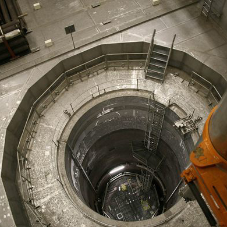The world is on the rise. Metropolis’ of towering skyscrapers are the norm for most. But, as the question of sustainability and green living arises should we consider going back to our roots? Should we be building underground?
By now we’ve all seen earth sheltered housing, even if it was only on an episode of Grand Designs. This concept isn’t new, there was a surge of earth sheltered construction in the 70s and remember the Teletubbies? Hobbits?! People have been building underground for centuries.
We ask, what are the benefits of building down?
Maximised Space
Building underground is a huge space saver, allowing for maximum potential whilst causing minimal disruption to its environment. Earth sheltered houses often blend seamlessly into the landscape whilst maximising on interior design and space.
A house designed for football star Gary Neville, by Make Architects covers nearly 8,000 square feet, not that you would be able to tell from the outside.
Almost entirely built underground, the house becomes one with the landscape surrounding it. With rooms based around a central kitchen, this property maximises on space due to its subterranean design.
Reduced Costs
Less surface area means lower costs. Fewer materials are needed and maintenance costs are lower. Although the initial cost of building an earth sheltered home might be larger than an average home build, due to extra care to ensure water and damp proofing, the ongoing maintenance costs are lower. Primarily in terms of heating, the earth layer acts as insulation.
Also, earth sheltered homes are more weather-proof; offering increased protection from extreme winds, hail storms and natural disasters like earthquakes. This means cheaper home insurance (hurrah!).
Energy Efficiency
Because they’re underground, earth sheltered houses benefit from a geothermal mass and heat exchange. Meaning they can regulate their temperatures more efficiently, and naturally, than standard housing. Allowing for an 80% energy cost reduction! Combining this with solar technologies could reduce bills to 0!
As with heat, underground houses are sound insulated too!
Earth sheltered housing is just the start of what we could develop below ground. Overcrowding and pollution in cities could be reduced by underground living and working.
For example, architecture firm BNKR have designed the “Earthscraper” for Mexico City. It is a 300m-deep inverted pyramid, designed to house 5,000 people.
In Helsinki there are plans to build and underground “Shadow City” to beat the rise of urbanisation. The cities bedrock is already home to a swimming pool, a shopping area, a church, a hockey rink, and a data centre.
Will construction underground blossom in coming years? What do you think about underground living? Let us know on our LinkedIn page.
Related Blog Articles



crop192.png)












